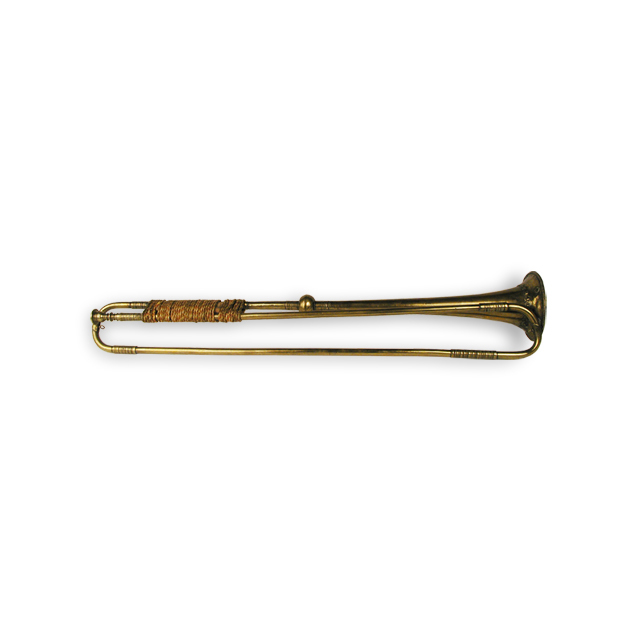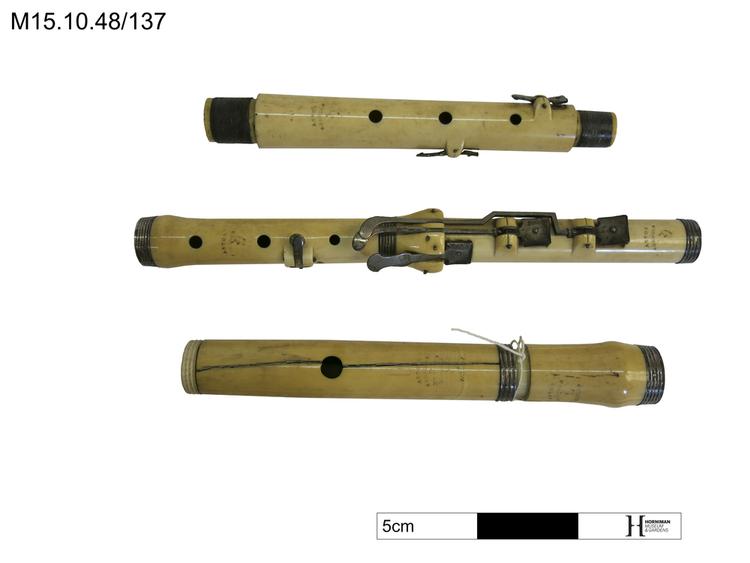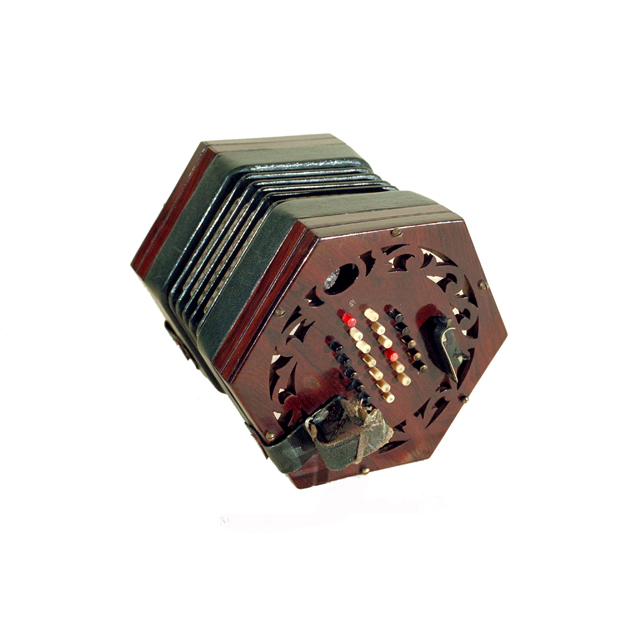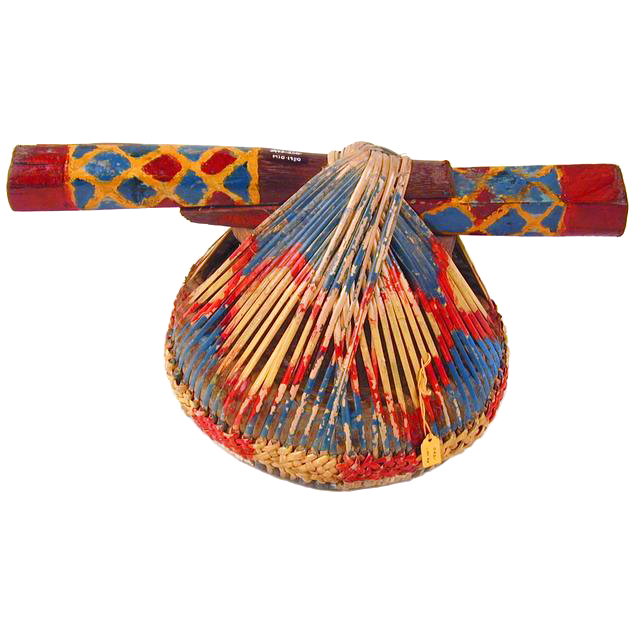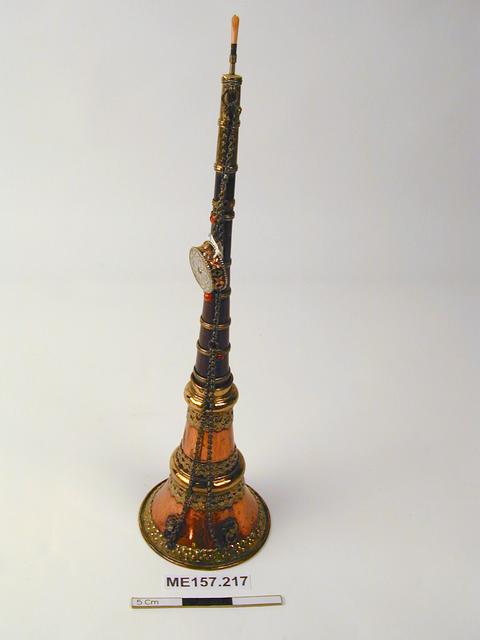
Rgya gling, oboe, with seven fingerholes and one thumbhole. Loose metal rings set with turquoise and coral are mounted on the body between the fingerholes. Copper bell and pirouette. The instrument was purchased with a reed for a European oboe.
The rgya-gling was introduced to Tibet by the fifth Dalai Lama in the 17th century and is used today in many different religious rites in Buddhist monasteries. The instrument is always played in pairs. The players are often expected to perform long, ornamented phrases, maintaining the sound through 'circular breathing', a technique in which the mouth cavity acts as an air reservoir, similar to the bag on a set of bagpipes.



